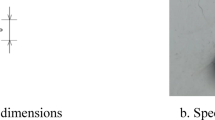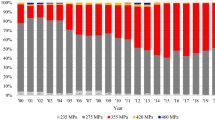Abstract
THE effects of temperature on transformations in steels have in the past usually been studied at room temperature after quenching. Thus, in a typical experiment, a specimen in the form of a rod was heated in such a manner as to establish a temperature gradient, so that the range of temperature in the specimen covered the region of interest. The rod was then quenched and zones (corresponding to particular temperatures at the time of quenching) examined by X-rays at room temperature. In this way information was obtained on the dependence of transformations on temperature. This method has two objectionable features. Primarily, the quench itself promotes transformations (austenite – martensite being a well-known example), so that the quenched material studied at room temperature is not the same as that prior to quenching. Secondly, the ‘resolution’ of the transformation is limited by the number of observations made.
This is a preview of subscription content, access via your institution
Access options
Subscribe to this journal
Receive 51 print issues and online access
$199.00 per year
only $3.90 per issue
Buy this article
- Purchase on SpringerLink
- Instant access to full article PDF
Prices may be subject to local taxes which are calculated during checkout
Similar content being viewed by others
Author information
Authors and Affiliations
Rights and permissions
About this article
Cite this article
HEAL, H., SAVAGE, J. An X-Ray Method for Studying Rapid Phase Changes in Steels at High Temperatures. Nature 164, 105 (1949). https://doi.org/10.1038/164105a0
Issue date:
DOI: https://doi.org/10.1038/164105a0



